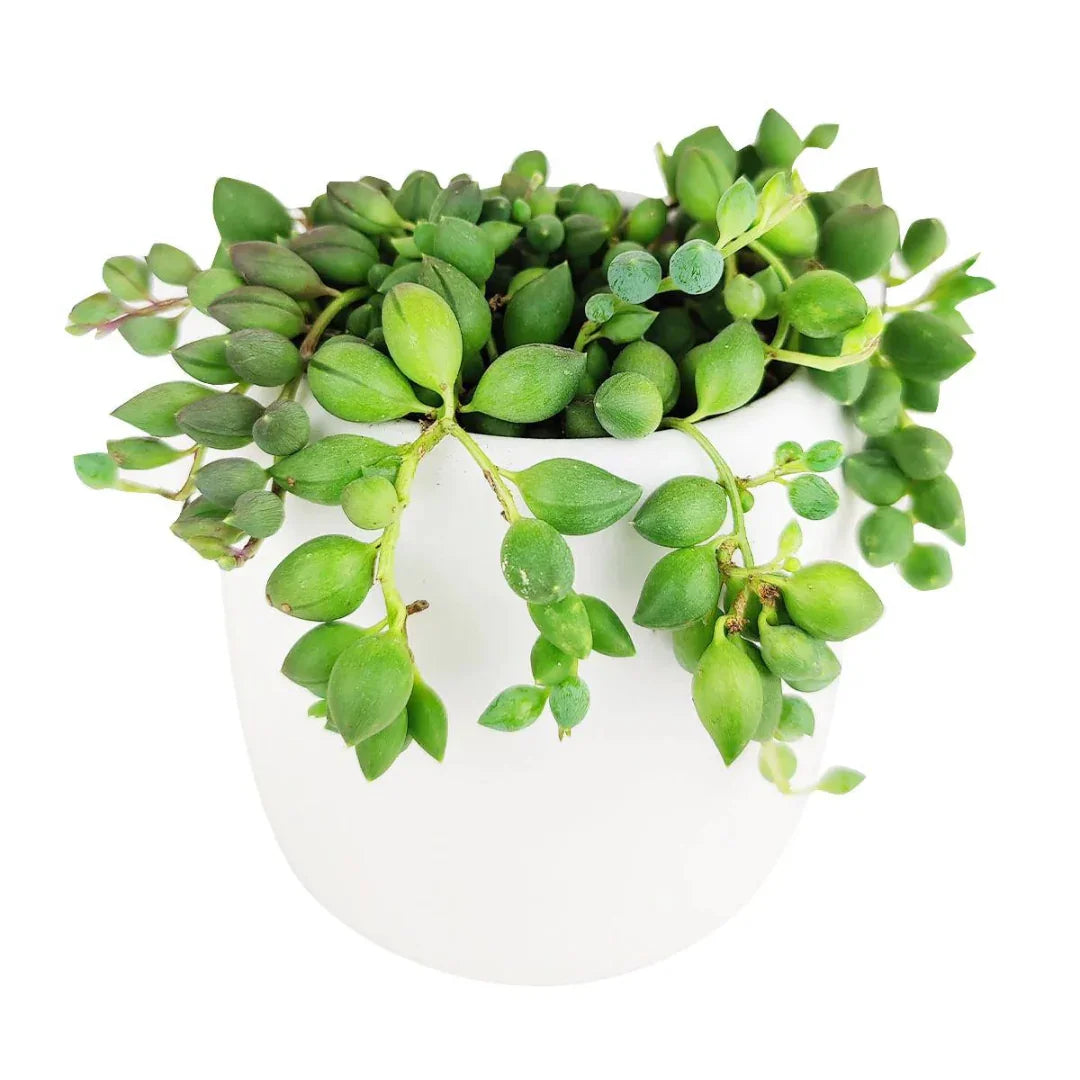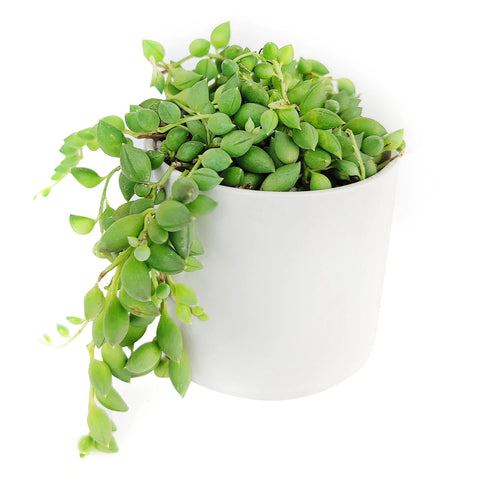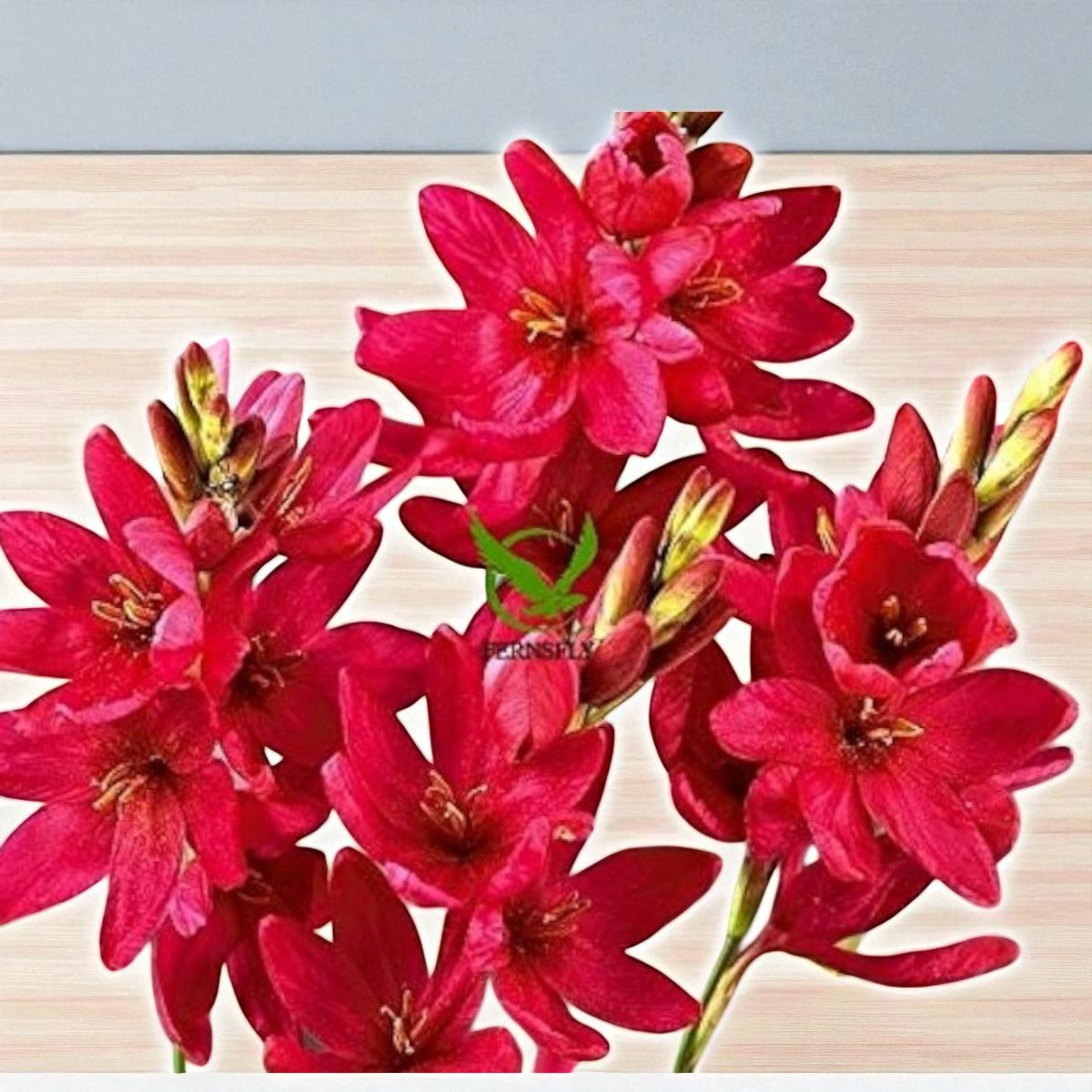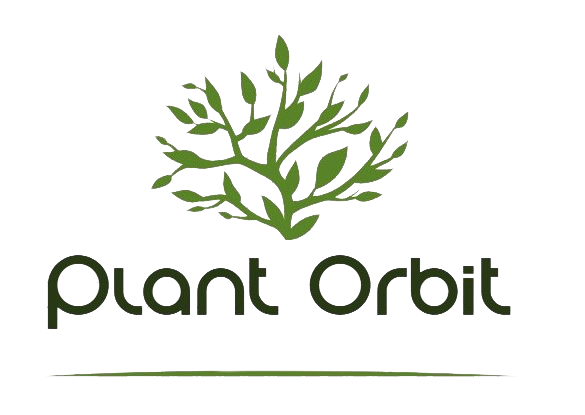
How To Grow and Care String of Tears
The String of Tears (Senecio herreianus )is a beautiful succulent plant originating from Namibia in South Africa.
This individual from the Asteraceae family is a delicate enduring delicious wanted for its crawling stems and alluring, tear-molded foliage.
This plant is a direct relation of Senecio rowleyanus (Pearl necklace Plant) and Senecio Radicans (Series of Bananas Plant).
Normal names for this plant include:
- Series of Watermelons
- Series of Raindrops
- Gooseberry Plant
- Series of Dabs
- Series of Tears

Series of Tears Care Guide :
Size and Development :
- The Series of Tears is regularly a low developing, following plant.
- Stems might accomplish a length of one foot in ideal conditions.
- The Series of Tears has following stems going in conceal from green to purple.
- The stems are genuinely solid and can develop to be in excess of a foot long.
- They have a following or crawling development propensity relying on how they're planted.
- The leaf shape is of a tear or raindrop.
- They are outfitted with clear leaf windows permitting all the more light to get in.
- At the point when you look in the window, you will see the inside of the leaf has extremely fine purple stripes.
- At the point when the plant is filled in brilliant daylight, the purple shades of the stems and leaves will become more obscure.
Blooming and Scent :
Senecio herreianus Series of Tears produces cinnamon-scented, trumpet-formed white blossoms throughout the spring and summer.
Light and Temperature. :
The Series of Tears truly does best in halfway shade or aberrant brilliant light as opposed to in the full immediate daylight.
As a houseplant, it truly does well in an east-bound or west-bound bright window.
Assuming you're developing the plant outside, you ought to acquire it before the chilly long periods of winter.
On the other hand, in the event that you're developing it as a groundcover, take cuttings to keep indoor plants as houseplants and return them to the outside when winter is finished.
This plant is winter solid in USDA strength zones 9b-11b.
Watering and Taking care of :
- All plants of this kind are adjusted to live in genuinely dry conditions.
- They can store water in their stems and leaves for significant stretches of time.
- Water as you would any succulents or prickly pear
- Hold on until the dirt is primarily dry and afterward water profoundly.
- Permit water to go through the dirt and out of the waste opening of the holder.
- Treat these succulents once every year throughout the late spring.
- Utilize a feeble arrangement of a decent, water-solvent manure.

Soil and Relocating :
The Series of Dabs prefers a dry, loamy, sandy, or gravelly soil with a nonpartisan pH level.
A strongly depleting delicious soil or desert flora blend is a decent decision.
Likewise with any delicious or desert flora, consistently use holders with more than adequate seepage openings.
Series Of Tears Plant Maintainence :
At the point when kept as a following houseplant, Series of Tears ought to be pruned consistently to keep a full shape.
Stick the stem cuttings back into the equivalent preparing to fill in any vacant spots.
Series Of Tears Propogation :
Series of Tears Senecio Plant is extremely simple to propogate.
In its local setting, the stems essentially trail along the ground and put down roots as they go.
In the wild, the tear plant structures thick mats.
Take cuttings whenever you like consistently.
Spread by sticking the finish of the cutting into free soil or just setting the cutting on top of free soil.
Press it down tenderly to ensure you have great soil contact, and it will before long start putting down roots.
Series Of Tears Diseases :
Generally, this tough delicious is bug and issue free when appropriately focused on.
Overwatering can cause root decay and stem decay and will likewise make the plant defenseless to delicious mealybug assaults.
On the off chance that your plant fosters any of these issues, move toward it by diminishing watering and involving a bug spray on account of mealybugs.
On the other hand, take sound cuttings, ditch the sick plant, and begin once more.
Assuming you do this, make certain to utilize new or completely cleaned compartments and crisp gardening soil and perlite blend.
Wash the cuttings completely to dispose of any mealybugs and permit them to air dry prior to setting them on the dirt surface to develop.
Is The Senecio Plant Considered Harmful Or Toxic?
Despite the fact that there doesn't appear to be explicit data in regards to harmfulness in Senecio herreianus Series of Tears, it's actually significant a few of its cousins are fairly noxious and ought not be eaten.
For instance, Senecio rowleyanus is viewed as somewhat poisonous to people and can cause side effects like loose bowels and retching whenever consumed.
Considering this, it should be kept completely out of reach of children and pets .

